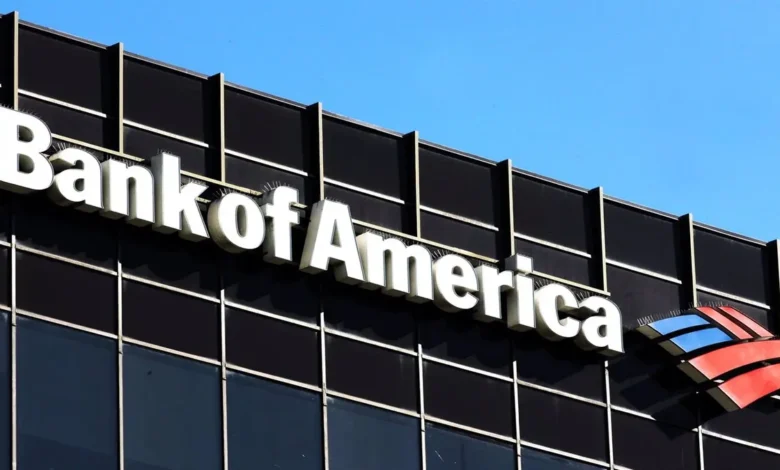Understanding the Impact of Bank of America Branch Closures

Explore the reasons behind Bank of America branch closures, their impact on communities, and what this trend means for the future of banking.
Bank of America branch closures have become a hot topic over the past few years. As one of the largest banking institutions in the United States, any change in its operations significantly affects customers, employees, and even entire communities. With the rising popularity of digital banking and cost-cutting strategies, the bank has shifted its focus, resulting in the shutdown of numerous physical locations across the country. But what does this trend mean for everyday customers and the banking industry as a whole?
In this in-depth article, we dive into the reasons behind Bank of America’s branch closures, the broader implications for society, and what the future holds for traditional banking. Whether you’re a loyal customer or just someone trying to understand these changes, we’ve got you covered.
Why Bank of America Is Closing Branches
The closure of Bank of America branches isn’t just a random move. It’s rooted in a larger strategy that aligns with changing customer behaviors and technological advances. More people than ever are handling their banking needs online, and that shift has driven major changes at Bank of America.
One of the primary drivers of these closures is the rise of digital banking. With mobile apps and online portals offering everything from check deposits to loan applications, customers are visiting brick-and-mortar branches less frequently. Bank of America has recognized this trend and is reallocating resources to strengthen its digital platforms. By investing more in online tools, the bank aims to offer faster, more efficient service to its customers.
Another factor is cost efficiency. Maintaining a physical branch involves significant expenses—rent, utilities, salaries, maintenance, and security, to name a few. By reducing the number of physical branches, Bank of America can cut costs and reinvest those savings in technology and customer service. This strategy allows the bank to stay competitive in an industry that’s quickly being reshaped by fintech startups and mobile-first institutions.
The Human Impact of Branch Closures
While the strategic reasoning behind the closures might make sense from a business perspective, there’s no denying the human impact of Bank of America branch closures. For many communities, especially rural and underserved urban areas, these branches are more than just places to withdraw cash—they’re vital community resources.
Seniors and individuals without reliable internet access often rely heavily on in-person banking. When a local branch shuts down, these customers are left with fewer options, sometimes having to travel long distances to conduct basic financial transactions. This inconvenience disproportionately affects people who are already vulnerable or marginalized.
Then there’s the employment factor. Each branch closure can result in job losses, affecting tellers, managers, and security staff. Although some employees are offered transfers to other branches or roles within the bank, not all are able or willing to relocate. The long-term consequences for these workers can be significant, especially if similar jobs aren’t readily available in their areas.
Digital Banking: The Catalyst for Change
Bank of America has been one of the frontrunners in digital banking innovation. Its mobile app is often rated among the best in the industry, offering features like Erica, the AI-powered virtual assistant, bill pay, and real-time alerts. The emphasis on digital tools is a clear signal that the bank is preparing for a future where most transactions don’t require a physical visit.
This shift has numerous benefits. Digital banking allows for 24/7 access, faster transactions, and reduced wait times. It also offers enhanced security measures and real-time fraud alerts, which are crucial in today’s cyber-threatened environment. However, this move isn’t without its downsides.
For customers who aren’t tech-savvy or who have accessibility issues, this digital-first approach can be daunting. There’s also the emotional aspect—many customers have built personal relationships with their local tellers over the years. The disappearance of these touchpoints can lead to a loss of trust and familiarity, something not easily replaced by a screen or chatbot.
How Communities Are Adapting to Closures

Communities affected by Bank of America branch closures are finding creative ways to adapt. Local governments and nonprofits have stepped in to fill the void, offering financial literacy programs and internet access to help residents navigate online banking.
Some areas have started hosting mobile banking units—essentially banking on wheels—that travel to different neighborhoods on a schedule. These mobile units offer many of the same services as a traditional branch and are a practical solution for maintaining financial access in areas hit hardest by closures.
Local credit unions have also seen a surge in new memberships. These institutions often prioritize community over profit and are less likely to close down local branches. For many, switching to a credit union feels like a more secure and community-focused option.
Bank of America’s Official Stance on Branch Closures
Bank of America has been relatively transparent about its reasons for closing branches. In various public statements, the bank has emphasized its commitment to customer satisfaction and technological innovation. According to the company, the closures are not indicative of financial trouble but rather a strategic pivot.
The bank insists that it’s balancing efficiency with accessibility. By reducing redundancy and consolidating branches, Bank of America claims it’s able to provide better services to a wider audience. It also points out that the number of closures is relatively small compared to its total number of locations, suggesting that this is a carefully managed transition.
In press releases, the bank highlights its ongoing investments in community initiatives and technology. From expanding broadband access to launching educational programs on financial literacy, Bank of America is attempting to soften the blow of its physical withdrawal from certain communities.
Customer Reactions to the Closures
Not all customers are pleased with the changes. Social media platforms and customer review sites are filled with complaints about long wait times at remaining branches and the impersonal nature of digital banking. Many loyal patrons feel abandoned, especially in areas where alternative banking options are limited.
However, there’s also a growing segment of customers who embrace the convenience of online banking. These users appreciate not having to take time out of their day to visit a branch, and many find the digital tools intuitive and efficient. For them, the closures are a non-issue, and some even view them as a step in the right direction.
It’s a mixed bag—while some are left scrambling, others are thriving. The key takeaway is that one size doesn’t fit all, and Bank of America will need to continue finding ways to serve its diverse customer base effectively.
The Bigger Picture: A Trend Across the Industry
Bank of America isn’t alone in this move. Across the banking industry, there’s been a noticeable shift toward reducing physical footprints. Other giants like Wells Fargo, JPMorgan Chase, and Citibank are also trimming their branch networks.
This trend is reflective of larger societal changes. As smartphones become more capable and internet access becomes more widespread, traditional banking is becoming increasingly obsolete. Financial technology companies like Chime, SoFi, and Robinhood are capitalizing on this, offering banking services without any physical branches at all.
Still, the complete disappearance of brick-and-mortar banking seems unlikely in the near future. Many people still prefer in-person interactions for complex financial matters like loans, mortgages, and investment planning. The challenge for traditional banks is finding a balance between digital innovation and the personal touch that customers value.
What This Means for the Future of Banking

The era of the neighborhood bank branch might be winding down, but that doesn’t mean the end of customer service or banking access. In fact, the future could hold more personalized, tech-driven solutions that better cater to individual needs.
Artificial intelligence, machine learning, and big data are already shaping how banks interact with customers. Instead of one-size-fits-all services, future banking may involve highly customized financial advice delivered via apps or virtual assistants. This shift could improve financial literacy and decision-making across the board.
Bank of America’s branch closures are just one part of a broader evolution. The bank—and the industry at large—is responding to new realities. Whether these changes ultimately benefit or disadvantage the average consumer remains to be seen, but there’s no doubt that the banking experience is being redefined.
Table: Comparing Traditional vs Digital Banking Services
| Feature | Traditional Banking | Digital Banking |
|---|---|---|
| Accessibility | Limited to branch hours | 24/7 via apps and websites |
| Personal Interaction | Face-to-face with tellers | Virtual assistants, chatbots |
| Transaction Speed | Slower, requires queuing | Instant or near-instant |
| Cost to Institution | High (staff, rent, etc.) | Lower operating costs |
| Risk of Closure Impact | High on local communities | Minimal |
Expert Quote
“Branch closures are not the end of customer service. They are a recalibration toward where customers are actually spending their time—online.” — Jane Mitchell, Financial Analyst
Frequently Asked Questions (FAQs)
Why is Bank of America closing branches?
Bank of America is closing branches primarily to adapt to the growing use of digital banking and to cut costs. With more customers using online platforms, maintaining physical locations is less essential.
How many branches has Bank of America closed?
The exact number fluctuates, but hundreds of locations have been closed in recent years as part of a broader strategy to optimize operations.
Will all Bank of America branches eventually close?
Unlikely. While many are closing, the bank has indicated that it will retain branches in high-traffic or strategically important locations.
How can I access services if my local branch closes?
Bank of America offers comprehensive digital banking services through its website and mobile app. Customers can perform most banking activities online.
Are customers affected by the closures?
Yes, especially those who rely on in-person banking. However, the bank provides digital tools and customer service options to ease the transition.
What are alternatives if a branch closes in my area?
Customers can explore other nearby banks, switch to credit unions, or fully adopt digital banking.
Is digital banking secure?
Yes, Bank of America uses advanced security measures including encryption, two-factor authentication, and real-time alerts to protect customer data.
Conclusion
Bank of America branch closures mark a significant shift in how banking services are delivered. While the move aligns with technological advances and changing consumer behavior, it also brings challenges, particularly for those who depend on in-person services. As the landscape continues to evolve, it’s crucial for banks to balance innovation with accessibility. Whether you view these changes as a loss or a leap forward, one thing is certain: the way we bank is transforming, and staying informed is the best way to adapt.





